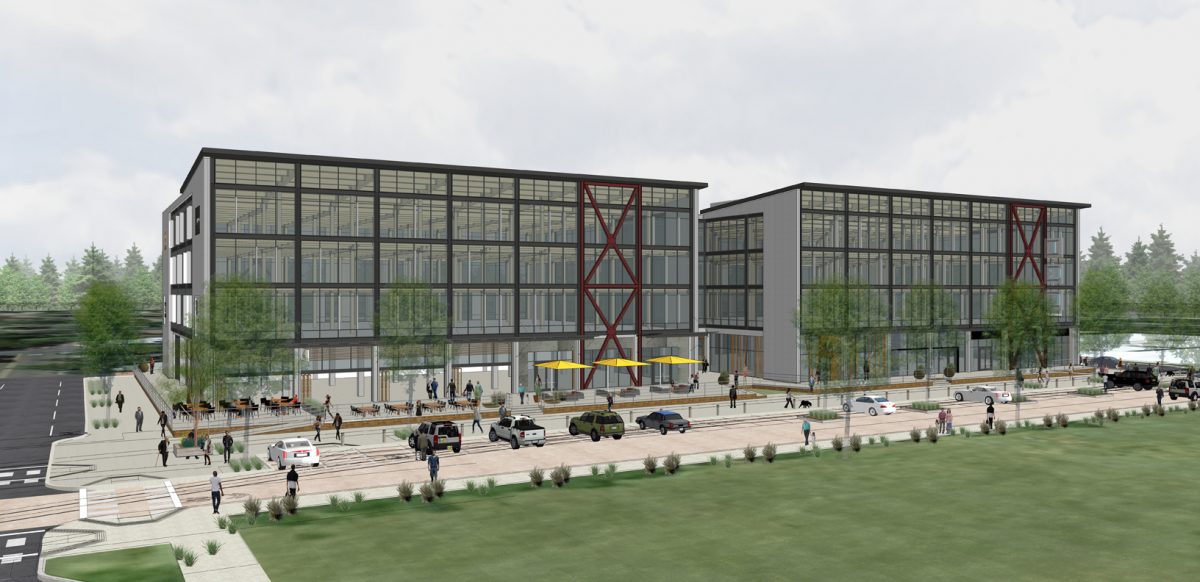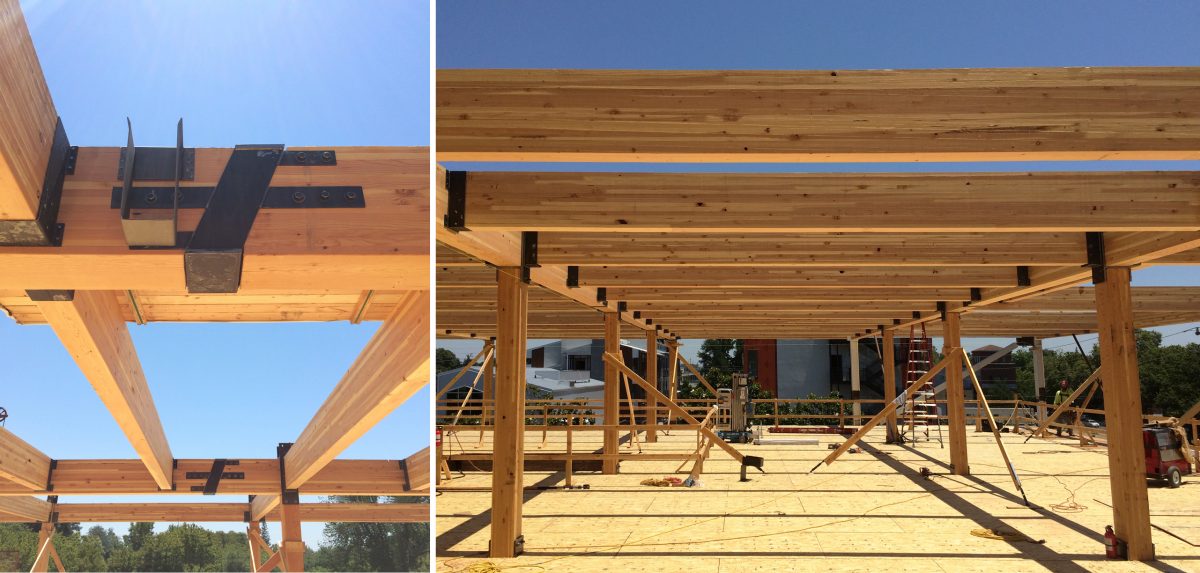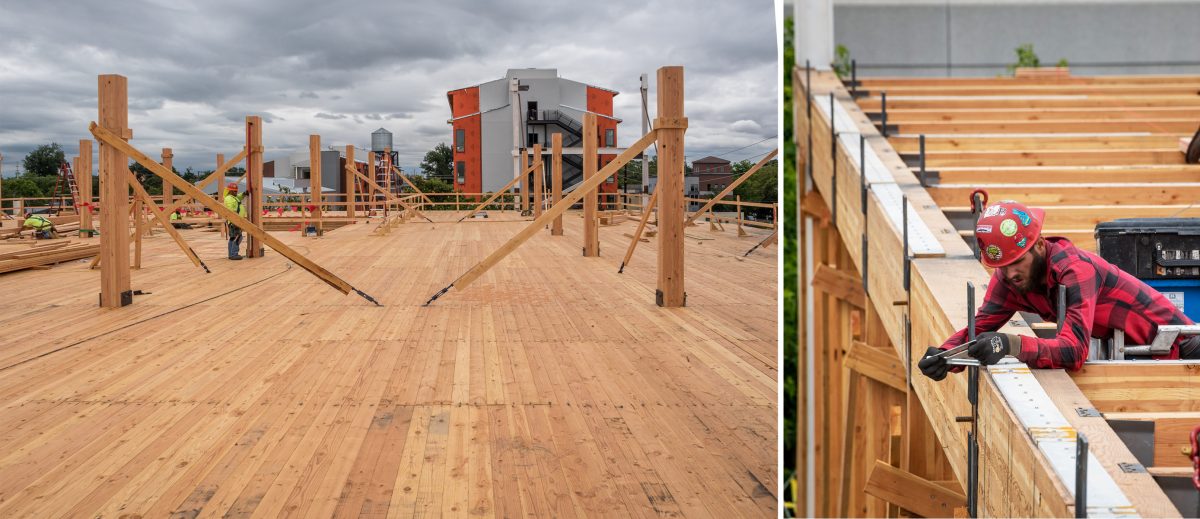Stories

The stories of Ice Block 1 (Ice Shops) have focused on its past – the century-old Crystal Ice Plant and Cold Storage building that was destroyed by fire in the winter of 2016. Increasing emphasis has also been on its future – the revitalization of Midtown Sacramento, 100,000 SF of office space and 30,000 SF of retail, with national market leader Williams-Sonoma’s West Elm as tenant. However, the untold story lies in the connecting planks that support this structure and its heavy timber construction.
The first timber-framed midrise to receive construction permits in Northern California, and the first to start construction, this four-story mixed-use commercial building stands where eight industrial buildings existed for over 50 years. From 1910 to 1960, each building exploited the construction techniques of the time. The oldest, long span, timber-framed with a brick exterior. The last, concrete with a wooden roof. Using the vernacular of the street – raised podium loading docks with large footprint industrial high-bay buildings, these structures were frequently altered through their service life and maintained temperatures as low as ten degrees below zero. Builders of that era sacrificed esthetics for function and created a beauty of their own that contributed to the legacy of industrial character on R Street. Today, Ice Block 1 embraces the typology of R Street without imposing its scale on Midtown Sacramento.
“What we’re trying to do is not cliché or pastiche; we’re trying to make something that’s authentic. It’s a modern building but built celebrating the historical approach to how things were framed. It’s like a barn raising.” Steve Guest AIA, LEED AP. Architect, Ice Block 1.
Exposed seismic Buckling Restraint Braces express the building’s structure in its façade. Deliberately weathered zinc frames house the transparent glass windows that reveal the exposed wood ceilings. Industrial grade, sustainably sourced, glulam beams push the limits of height and area. The calculated configuration of bolts, seven-inch nails, steel buckets with clear coat epoxy, and off-column splice connections, support the strong shallow beams. Together, these elements form an orchestra of traditional materials to erect a modern building.

Some may credit the resurgence of timber-framed construction to the revival of industrial spaces. However, beyond the aesthetic, timber-framed buildings are more often designed to create an experience that inhabits the intangible biophilic benefits of visible natural materials. Why retreat to a log cabin? Ice Block 1’s raw timber offices, in the city of trees, will create connections to nature that support the health & well-being of its occupants and rival the best Class-A office building’s biophilic strategy.
Chapter 23 of the International Building Code and the Wood Products Council suggest that factors including code acceptance, seismic performance, and fire protection are primary reasons to build with wood. Wood is recognized in the building code for its safety. It is allowed in a wide range of occupancy and construction types and it also has excellent structural performance in the stable framing systems used in Ice Block 1.

Extensive research within the timber industry supports building code development to prove that wood meets and exceed earthquake design requirements. Earthquake loads are proportional to a structure’s weight. Wood, being lighter than steel, denotes less seismic loads on a building. Ice Block 1’s multiple connections equate to numerous load paths and a significantly reduced chance that the structure’s connections would fail. In fact, the dove-tailed nature of timber-framed buildings supports exceptional seismic performance.
“A classic example of Heavy Timber construction, (Ice Block 1 is) not something that we see every day in office construction.” Janelle Leafblad P.E. Regional Director, Wood Products Council
The char rate of a glulam timber allows for fire safety comparable to steel. Buildings codes are material neutral and require that all buildings systems perform at the same level. With the standard fire protection systems in place and external factors considered (open spaces around the building), the allowable size of the wood-framed structures can increase. Ice Block 1 and similar heavy timber structures have a particular advantage; glulam timber will char on the outside and retain its strength thereby slowing combustion.
Billed as “the pinnacle of architectural sophistication in the Sacramento market,” this innovative project will expose modern officing to a more contextual experience, further develop the Midtown district, and honor the century-old Crystal Ice Plant. Beyond the story of its engineering and design approach will be the quality of Ice Block 1’s space, where inhabitants and visitors will see the systems, feel the beams, and experience the wood.
codes / construction process / design process